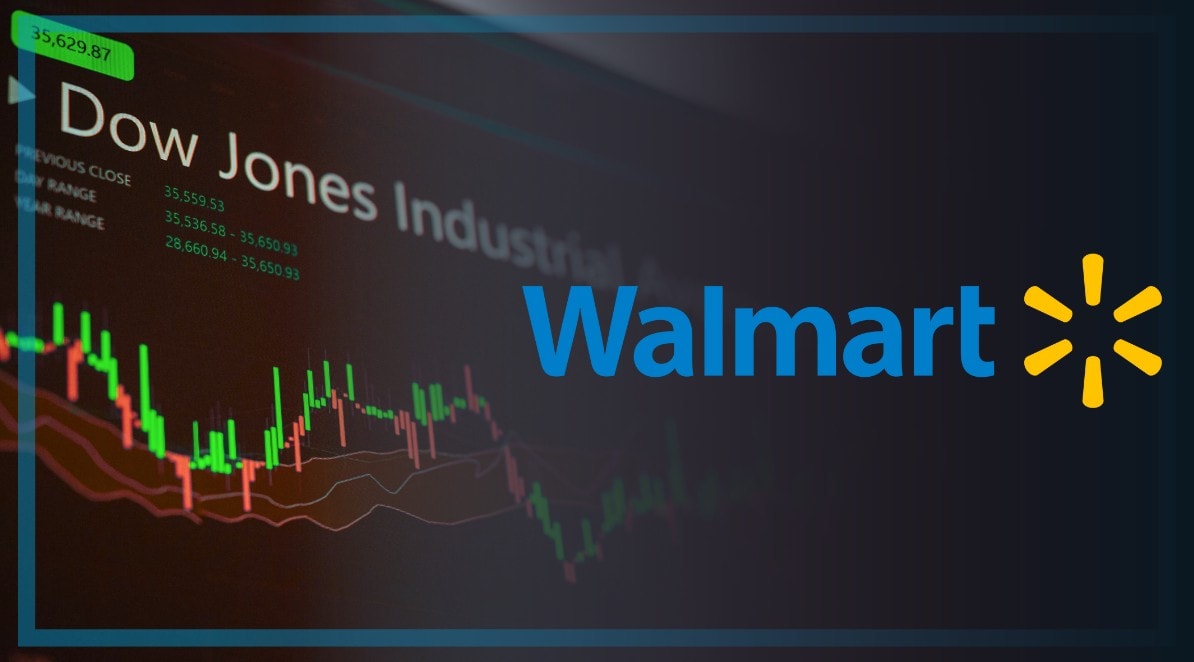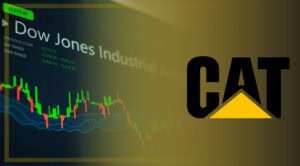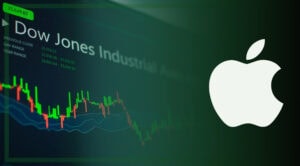As the only oil major left in the Dow Jones Industrial Average (DJIA), Chevron (ticker: CVX) carries more than just barrels and pipelines. It must bear the weight of a shifting global energy system, investor expectations for high dividends, and the tension between today’s profits and tomorrow’s climate commitments.
Since rejoining the Dow in 2008, Chevron’s journey has reflected the very cycles that shape markets: boom, bust, reinvention, and resilience.
This is the story of how one of the world’s most valuable energy firms is steering through volatility — while still helping power one of the world’s most watched stock indexes.
Chevron’s Dow Jones Return
Chevron Corporation first joined the DJIA in 1930 under that name – previously it enjoyed a brief tenure at the Dow in the 1920s when it traded as Standard Oil. It remained there until 1999, when its second tenure ended and high-tech stocks like Intel and Home Depot were added. But Chevron re-entered the index on February 19, 2008, when Chevron (CVX) and Bank of America replaced Altria (MO) and Honeywell in the Dow.
Chevron has remained in the DJIA since then, and since ExxonMobil’s exit in 2020, it is the sole oil-and-gas company in the index.
Fueling Growth: Chevron’s Pre-Dow Stock Surge
Before 2008, Chevron’s shares benefited from a long oil boom. In 2000, CVX closed the year at around $16; seven years later, it was trading above $46. U.S. shale output and steady dividends contributed to its success, as did deals like the Texaco merger in 2001 when Chevron bought the company for $45 billion, becoming one of the world’s biggest oil companies. The deal boosted Chevron’s oil reserves and refining power, strengthening its position in the energy market.
In the years just before rejoining the Dow Jones, Chevron’s stock had outperformed the S&P 500, roughly doubling or tripling thanks to oil – it rose by more than 30% in 2007 alone. Chevron was right for the DJIA.
Riding the Energy Shifts
Since its re-entry to the Dow, Chevron’s stock has weathered several cycles. It fell during the 2008 financial crisis, ending the year at about $38.50, but recovered into 2014 as oil reached $100/barrel. Sharp corrections followed when oil prices collapsed: a 16% drop in 2015 as WTI fell and a 26% plunge in 2020 amid the COVID-19 shock.
More recently, CVX rallied in 2021-2022 (reaching an all-time high of just above $169 in early 2023) as global markets tightened and oil surged after the Ukraine invasion. In 2023, however, CVX conceded ground as oil prices eased: it fell about 13.6% in 2023 to close around $138, before rebounding to an average of about $146 in 2024, and was trading at around the same price as at early July 2025.
Chevron, one of the world’s largest oil companies, just announced a $75 billion stock buyback.
— The Kobeissi Letter (@KobeissiLetter) January 25, 2023
Meanwhile, we have seen over 200,000 layoffs in tech since October.
For the first time in decades, the oil industry is leading higher and tech is hurting.
You’re witnessing history.
Earnings results, like the Chevron latest Q1 2025 earnings release, have broadly tracked these swings.
By 2024, Chevron’s net income had halved from two years previously, falling to $17.75 billion from $35.5 billion in 2022, reflecting lower oil margins and one-time charges. Nonetheless, the company maintained a 6% dividend increase and returned a record $26.3 billion to shareholders through buybacks and dividends in 2023. Thus, compared to its pre-Dow performance, CVX’s numbers have been better since joining the Dow Jones component.
Measuring Chevron’s Muscle in the Dow Jones
At its current price, Chevron CVX makes up roughly 2.0% of the Dow Jones’ price-weighted index (IndexArb). A 1% move in CVX moves the DJIA by about two basis points (0.02%). This modest weight reflects CVX’s share price and recent stock splits. Though smaller than tech giants like Nvidia (NVDA), Microsoft (MSFT), Apple (AAPL), and IBM, or finance giants like JPMorgan Chase (JPM), in volatile oil markets, Chevron’s swings can sway the Dow’s defensive tone — especially when energy headlines dominate.
Tightropes Chevron Walks
Oil price volatility, its mergers and acquisitions (M&A) strategy and environment, sustainability, and governance (ESG pressures) are some of the current challenges Chevron is dealing with.
Chevron lives and dies by oil. The 2020 COVID-19 pandemic forced production cuts and halted buybacks. In early 2025, an OPEC+ surprise and U.S. tariff worries sent oil down to four-year lows, prompting $75 billion in stock repurchases. Yet Chevron’s strong balance sheet — no debt due until 2027 — insulates it from worst-case shocks.
On major acquisitions and risks, in 2023, Chevron agreed to buy Hess Corp for $53 billion to gain a 30% stake in Guyana’s Stabroek field and bolster shale. But legal challenges from ExxonMobil and China’s CNOOC over pre-emptive rights have delayed closing. According to recent Reuters reports, a decision has been reached by the arbitrators, which is being reviewed by the Paris-based International Chamber of Commerce before releasing it to the parties involved.
If the deal doesn’t pull through, it would be a major strategic setback for Chevron CEO Mike Wirth, and a dent in Chevron’s growth plans. Chevron also bought Noble Energy in 2020 and PDC Energy in 2023.
The arbitrators in a legal dispute between Exxon Mobil and Hess have reached a decision related to a major oilfield project in Guyana, according to two sources familiar with the matter. https://t.co/Cs6bxWQCjE
— Reuters China (@ReutersChina) July 5, 2025
There are also ESG concerns, with shareholders pressuring Chevron on climate. In 2025, investors rejected proposals for detailed reports on human rights and stranded assets. A major ongoing Rhode Island climate lawsuit survived Chevron’s 2025 dismissal attempt. The company has pledged net-zero upstream emissions by 2050 and invests in methane cuts and carbon capture — but critics say it needs bolder targets.
Despite walking on these eggshells, there are still new opportunities for the oil giant.
Open Doors for Chevron
Energy security and policy shifts favor major producers. U.S. talks on easing Venezuela sanctions and expanded drilling could open new resources for Chevron. The US Energy Information Administration forecasts rising oil demand in 2025, which will ease inventories.
Furthermore, Chevron’s $40 billion in cash and target of $2-10 billion in free cash flow by 2026 give it firepower to buy assets and sustain payouts. Growth in liquid natural gas (LNG), hydrogen, and digital services offers new avenues, though at a smaller scale. For now, Chevron lives to fight another day.
UPDATE:
— Laura Loomer (@LauraLoomer) June 10, 2025
After the US refused to extend the oil licenses to American oil companies like @Chevron in Venezuela, the CCP has moved in, and Venezuela's oil exports held steady in May 2025, thanks to a surge in shipments to China, offsetting a drop in U.S.-authorized sales.
The… https://t.co/63yiixycfE pic.twitter.com/U6GniMFGnu
Can Chevron’s Stock Keep Rising?
On this issue, Wall Street is confident, but still watching closely. Analysts rate CVX as a Buy, with a 12-month target of $160-165 (about 10-15% upside). They point to a robust dividend (4.5% yield), cost discipline, and production growth in key basins. Chevron’s forward price-to-earnings ratio (P/E) is around 17, and expected mid-single-digit earnings per share (EPS) gains suggest a fair valuation.

Source: StockAnalysis
Key drivers will be global oil prices (shaped by OPEC+, demand trends, and geopolitics), Chevron’s ability to close and integrate major deals, and the pace of its energy transition efforts.
If oil holds firm and Chevron executes its strategy, the stock could outpace the broader market in the next 12 months, per Tipranks report. If prices languish or ESG/legal issues intensify, CVX may lag.
In the decades ahead, Chevron’s challenge is clear: balance reliable cash returns with bold moves into a lower-carbon future. For Dow Jones investors seeking both income and market buffer, Chevron remains the industry’s steady hand behind the pump.
Author: Richardson Chinonyerem
The editorial team at #DisruptionBanking has taken all precautions to ensure that no persons or organizations have been adversely affected or offered any sort of financial advice in this article. This article is most definitely not financial advice.
#Chevron #DowJones #Industrial #Commodities #AssetManagers #Dividends
See Also:
Johnson & Johnson: A Steady Dose of Dividends in the Dow Jones | Disruption Banking
Caterpillar’s Dow Jones Legacy: Powering Progress Through Innovation | Disruption Banking
Disney in the Dow: A Generation of Thrills, Spills and Transformation | Disruption Banking
Amazon’s Dow Jones Rise: Innovating Markets, Facing Scrutiny | Disruption Banking
Apple’s Decade in the Dow: Powering Tech’s Market Influence Since 2015 | Disruption Banking














